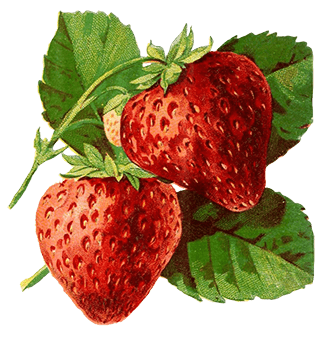The diversity of fruit tree flavours extends far beyond the usual few varieties found on our supermarket shelves and we would urge all our customers to be adventurous and open-minded before making a purchase.
Flavour
In relation to apples, some of the earliest apples such as ‘Discovery’, ‘Katy’, and ‘Devonshire Quarrenden’ have a distinctive strawberry flavour.
Pineapple acidity is a highly esteemed quality associated with many old varieties including ‘Lucombes Pine’, ‘Pitmaston Pineapple’ and ‘Allington Pippin’ while ‘Ashmeads Kernel’ and ‘Ross Nonpareil’ and many others are renowned for their sweet/sharp, acid drop quality.
Some apples like ‘Elstar’ and to a lesser extent ‘Jonagold’ share this sweet sharp quality but are also regarded as having a honeyed flavour. Conversely, a good ripe ‘Golden Delicious’ would be regarded as a honeyed apple without the sharpness. ‘Blenheim Orange’, ‘Claygate Pearmain’ and ‘Egrement Russet’ are said to have a nutty flavour.
‘Ellison’s Orange’ has a strong aniseed taste while the varieties ‘St Edmunds Pippin’ and ‘Sweet Sixteen’ all carry a hint of vanilla. Well known Irish variety, ‘Ard Cairn Russet’ is most unique in that its flavour is often said to resemble banana.
This is just a snapshot of the diversity of flavours available. The great thing about growing and collecting your own apples is that every variety is different and we have more than 300 to choose from.
Appearance
‘Russets’ and ‘Russeting’ refers to the skin of some varieties which have a light sandpapery texture and a golden brown or burnt umber colour. These are often very visually attractive and the russeted skin often lends a nutty taste to the apple in question. Some apples are completely covered in russet, some have patches, and some like ‘Buttemilk Russet’ have a lovely network of russet that can be visually stunning.
Cooking apples are distinguished from dessert apples by their higher levels of acidity and often by their greater size also. Flavour is determined by the proportion of sugar and acid in the fruit.
Apples such as ‘Bramley’s Seedling’, ‘Catshead’ and ‘Cottenham Seedling’ have strong acidity and are rarely overpowered by even the spiciest, sweetest recipes. The sugar/acid balance can also determine how the apple cooks and generally speaking the higher the acid content the more easily it will cook to a puree while those with higher sugar content will keep their shape when cooked.
Apples that break down easily such as ‘Bramley’s Seedling’, ‘Catshead’ and ‘Cottenham Seedling’ are good for closed pies, crumbles and apple sauces.
Those that keep their shape include ‘King of the Pippins’ (used by French chefs to make open tarts such as Tarte Tatin) and ‘Glockenapfel’ (famous for making Apple Strudel as it retains a little bite when cooked). Some chefs use dessert apples for these types of dessert. These may also hold their shape well when cooked but lack the flavour of a true culinary or dual purpose variety.
It should be mentioned that the sugar/acid balance of a particular variety is often determined by when the fruit is picked and used. Fruit picked early will have a higher acid content than stored fruit. Theoretically speaking, a Bramley Seedling that is picked early will have more acidity and should break down to a sharp puree while one that is taken from storage in March might be sweeter and less acidic and might make a very good Tarte Tatin.

